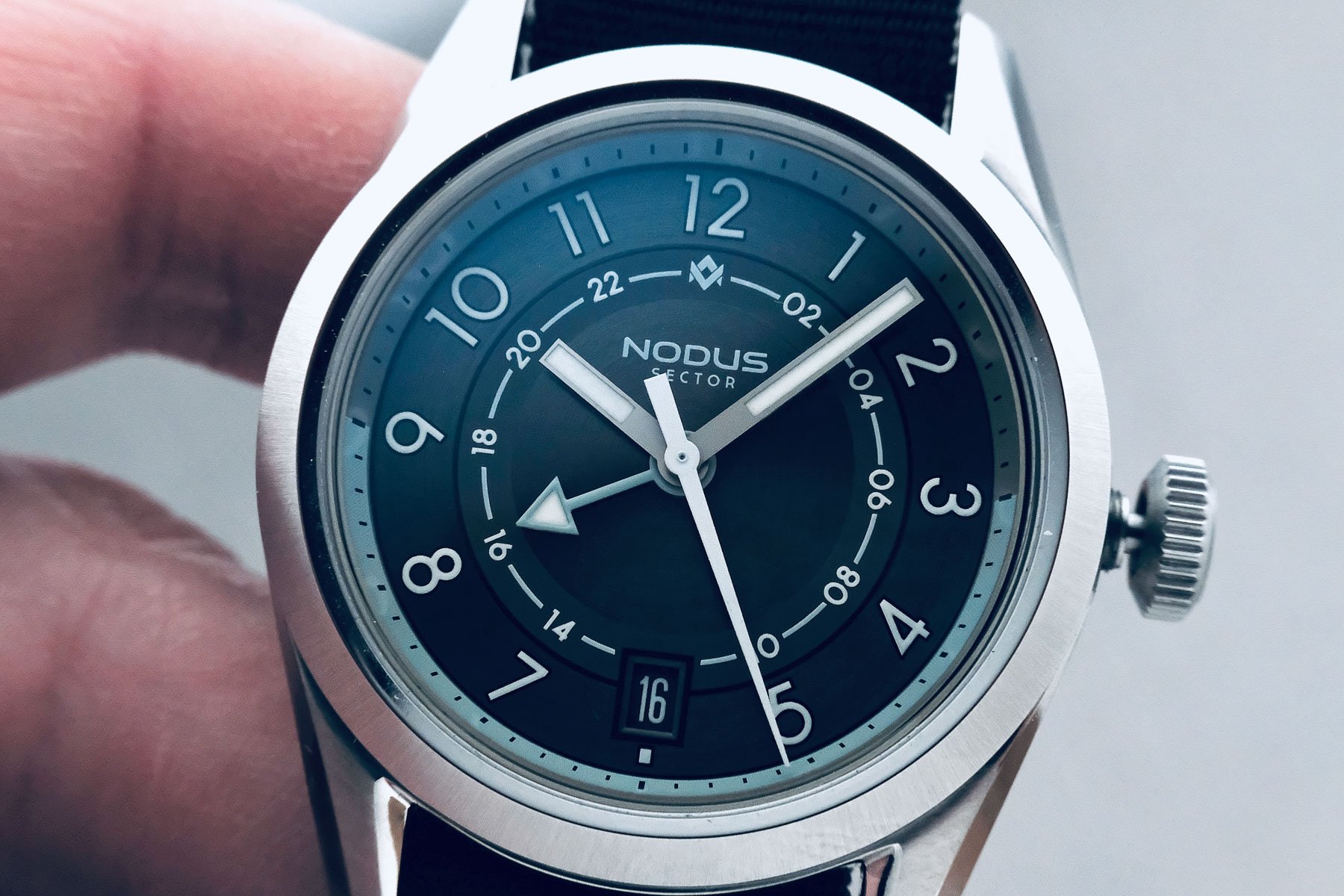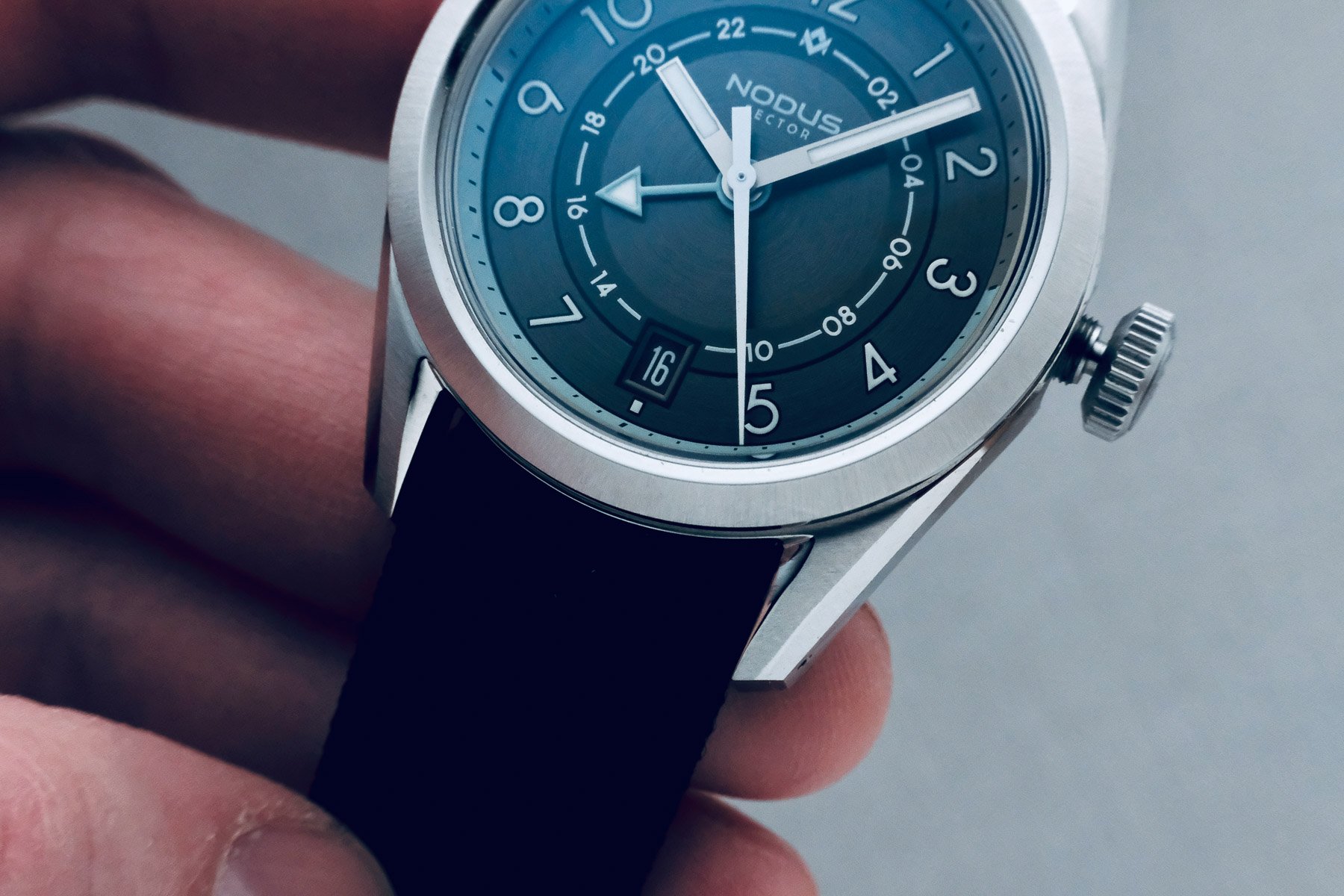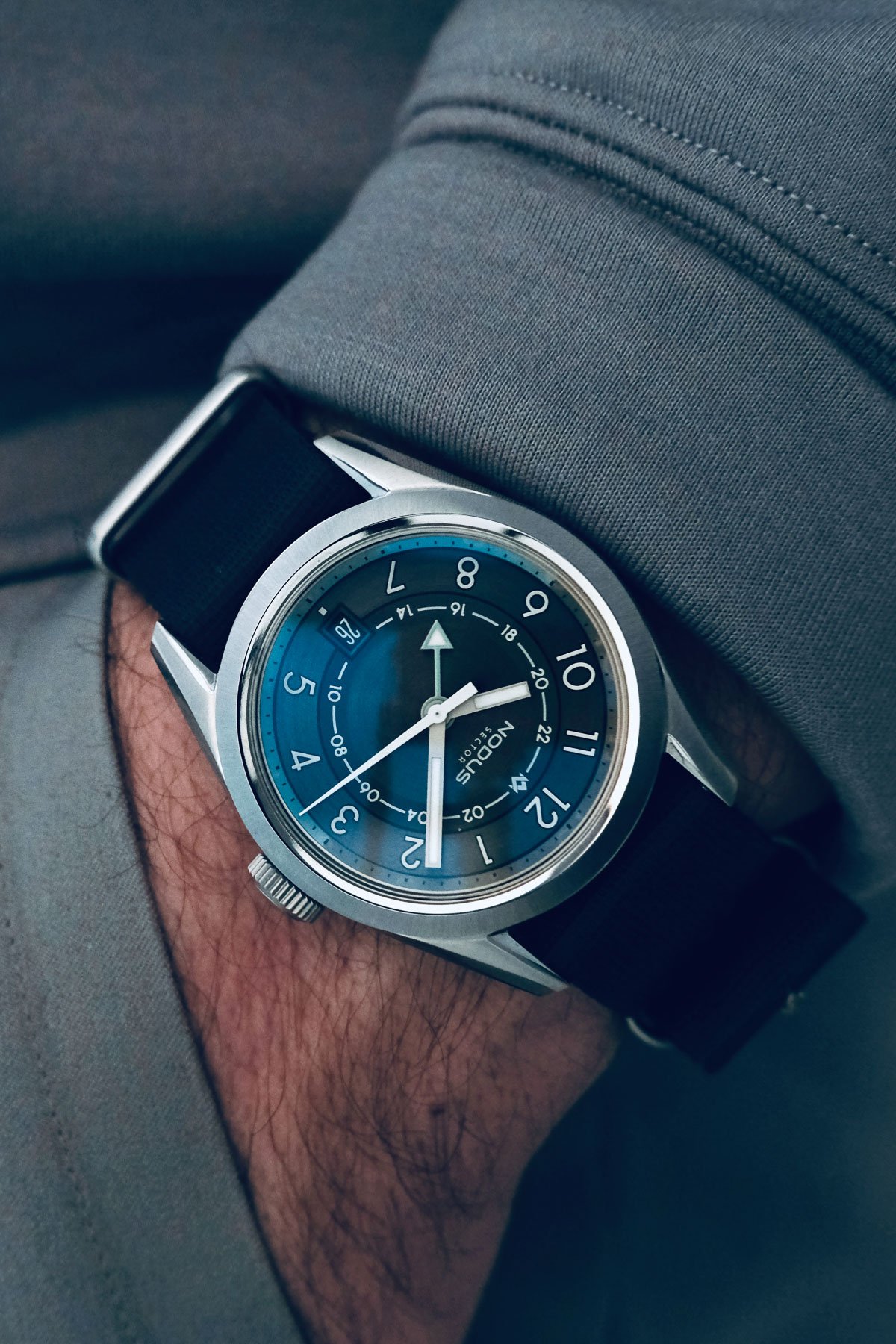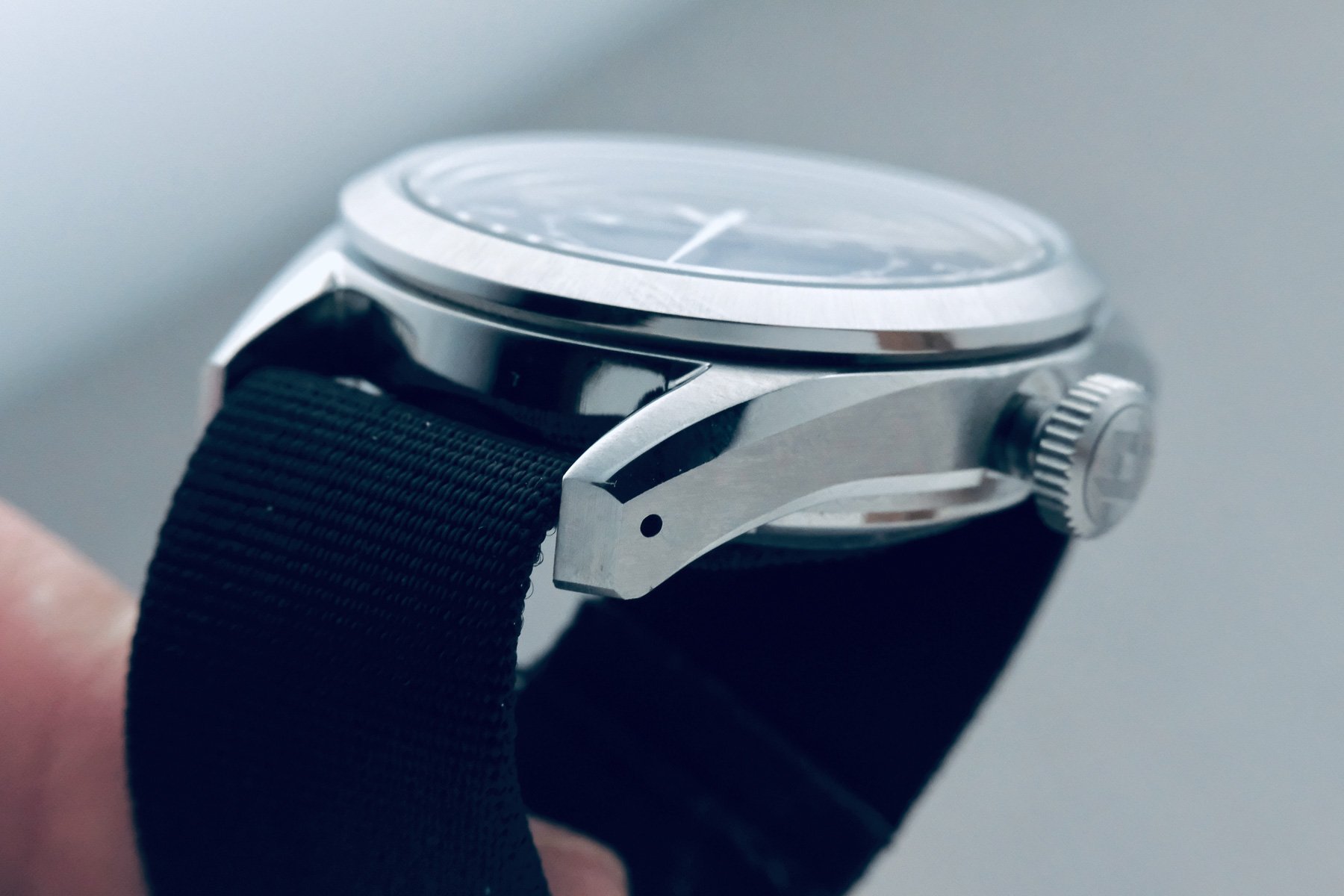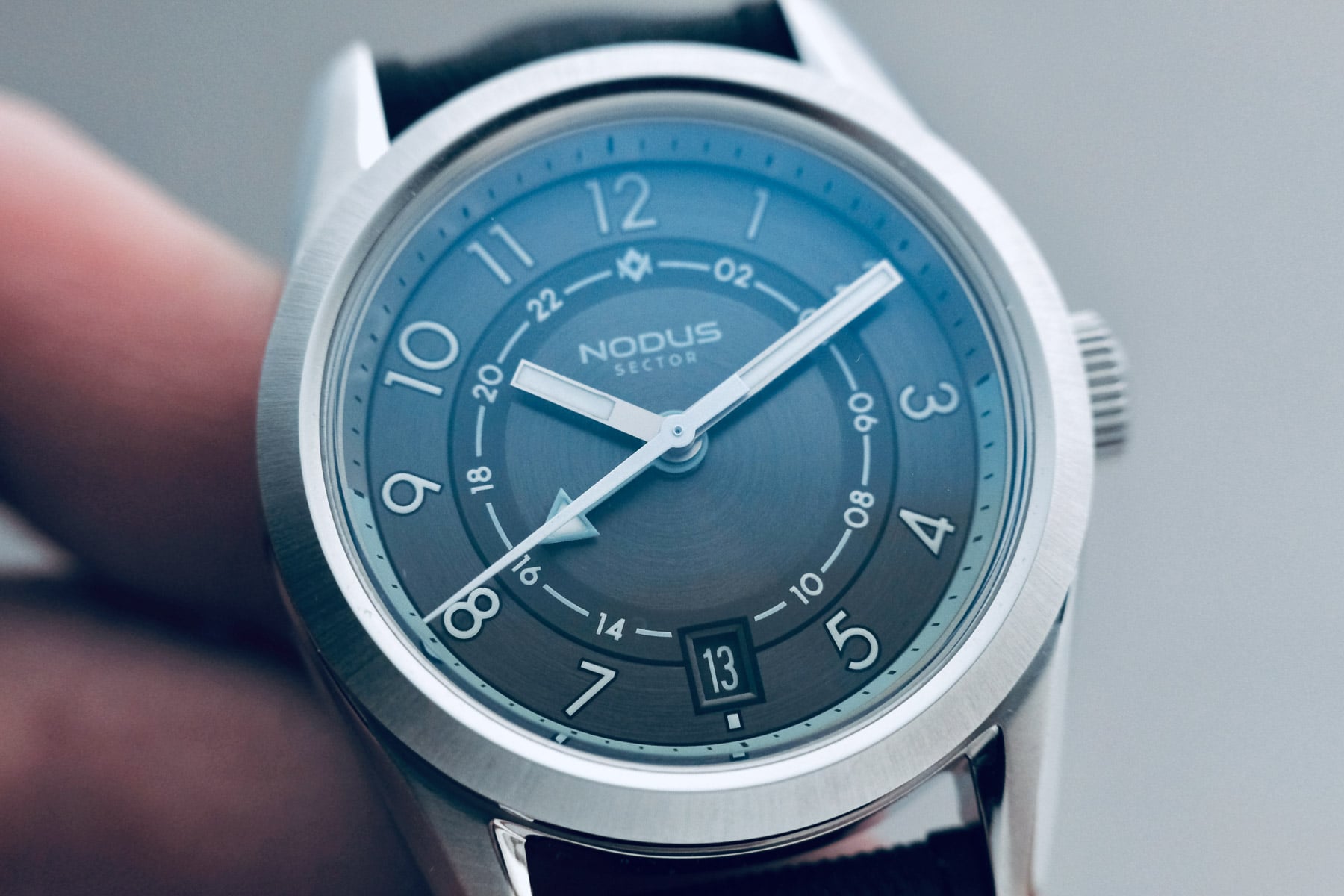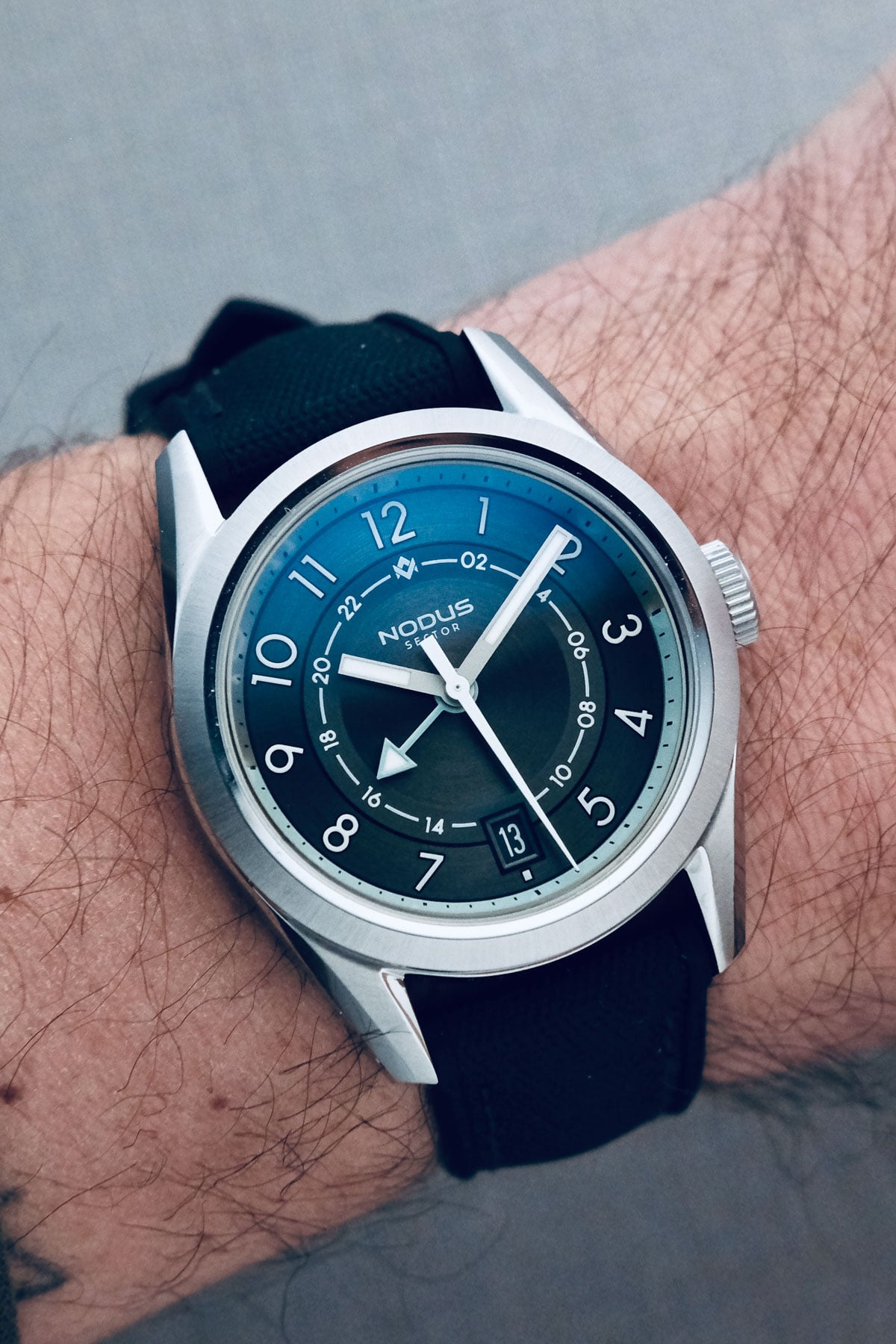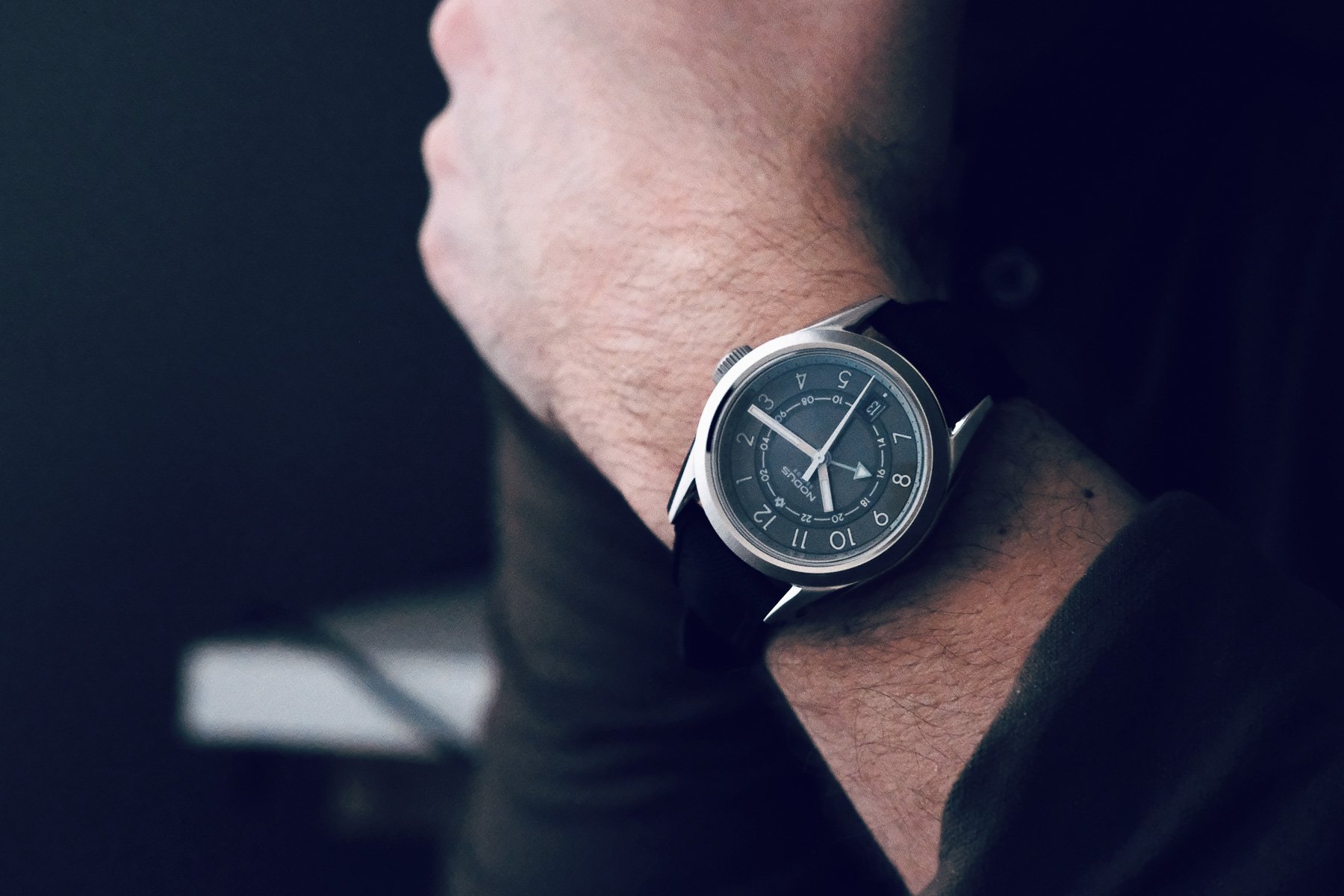The Nodus Sector GMT — An Owner’s Review
Seiko did something pretty cool in 2022 by releasing the NH34 (4R34) GMT movement and the Seiko 5 Sports GMT collection. While some complain that Seiko is losing its own game (whatever that means), others applaud the brand for what it dared to do — make GMT watches more affordable and make a good movement accessible to all. Although the timing of the release of numerous NH34-powered GMT watches from microbrands seems conspicuous, it isn’t. Micro and independent brands know what brands are up to before we do. I had heard of the NH34 movement months before Seiko announced it. This means that brands had plenty of time to come up with their own affordable GMT watches, like Nodus and the Sector GMT.
I like Nodus. I reviewed the Avalon II Bronze last year, and Dave reviewed the stainless steel version before that. In my opinion, the brand creates watches that offer a lot of value for the asking price (this is highly subjective, and you can take what I say with a large grain of salt). I also mentioned the Sector GMT in December as part of my “Three Best Microbrand GMT Watches of 2022” article. But guess what? I actually bought myself a Sector GMT. So today, I’m sharing my owner’s review after wearing this watch for a couple of months. Let’s see what it’s all about.
All the specs in the world
Besides having good looks, the Sector GMT comes with some serious specifications for the asking price of US$450. As you already may know, it is equipped with the Seiko NH34 “caller” GMT caliber. The NH34 beats at 21,600vph (3Hz), has 24 jewels, and provides a 41-hour power reserve. Nodus, unlike most brands that released an NH34-powered model in the past year, regulates the movements in-house. While the stated accuracy is +40/-20 seconds per day, Nodus tunes it to ±10 seconds per day. My watch is consistent and runs at +5 seconds per day. This is much better than any NH34 movement sold by Seiko (labeled as the 4R34 in the brand’s own watches). I also own the black-dial Seiko 5 Sports GMT (ref. SSK001), which runs at +10 seconds on a good day.
Yes, mechanical movements can be capricious depending on the environment you find yourself in. I was surprised to see that the NH34 regulated by Nodus runs better and is more consistent than the movement in my SSK001. This might be just me, and I couldn’t explain to you why even if my life depended on it.
The Sector GMT has a case diameter of 38mm, a lug-to-lug distance of 47mm, and a total thickness of 12.25mm. The dimensions are great for my 16cm (6.25″) wrist as the case feels neither too big nor too small. However, the watch commands presence on the wrist due to its massive lugs. This might not be your thing, but I do like the lug design because it makes the watch look and feel solid. I also appreciate the fact that Nodus managed to keep the height to 12.25mm by opting for a flat piece of sapphire crystal. With a 20mm lug spacing, it’s easy to find the perfect strap combo that works for you. I find that a single-pass NATO or MN strap works great for me.
Now that’s a legible dial!
I feel that design generally divides people into two groups — those who love it and those who hate it. And although the Sector GMT is not an MB&F machine, it is somewhat of an acquired taste. The Nodus Sector collection (more on that later) is heavily oriented toward tool and sports watches, and the GMT model definitely belongs to that category. There are a lot of Arabic numerals on that dial, and I sometimes even feel there are a few too many. This type of dial layout is certainly very legible, but it can be overwhelming at times, at least to me. However, I honestly must admit that I wouldn’t know how to have designed it differently.
Despite what I said above, I like the way the Sector GMT looks overall. It’s inviting and very toolish, and the most impressive thing is the quantity of lume that the indices hold. Nodus went as far as luming the Arabic numerals on the GMT scale. The Nodus logo that appears at the top of the GMT sale is not lumed, and the “12” at the bottom had to make space for the date aperture. Speaking of which, I love the integration of the date at 6 o’clock as it is beveled and framed. Nodus also more or less color-matched the disc to the dial color. The date disc is just a bit darker than the dial, which makes reading the date printed in white easier.
Finishing that accentuates the case design
Being a tool watch, the dial of the Sector GMT received a noticeable radially brushed finish. This is perhaps one of the most interesting visual elements of the dial to me. The brushing is repeated on the top of the fixed bezel, the top of the lugs, and the case sides. For some contrast, the edges of the bezel are polished, and so is the chamfer on the mid-case and on the underside. The crown is of the screw-down variety, and it is large, thin, and easy to grip. Coupled with a screw-down case back, the Sector GMT is water resistant to 100 meters, which is enough for this type of watch in my opinion.
Nodus is known in the microbrand community for offering very good finishing on its watches. The Sector GMT does not disappoint. And it does something extra in that the alternating finishes accentuate the case design. Earlier, I mentioned the lugs as an element of the watch design that I am particularly fond of. Well, their presence is even more noticeable — in a good way, I think — thanks to the alternating finishes and, in particular, the deep, polished bevel. These lugs in general remind me of the bow of a warship.
Where the GMT lives in the Sector collection
Before I share my final thoughts on the Sector GMT, I wanted to briefly talk about the Sector collection — or rather, collections. Nodus currently offers five genres of Sector watches — Dive, Field, Pilot, Sport, and GMT. While all of these watches look different, they all share common design characteristics — legible dials, Arabic numerals, sector dials (I know, duh!), and massive lugs. They also all share another common and rather interesting characteristic: their price range between US$450 and $475. Given the specs and the unique design DNA of these Nodus watches, the brand has formulated a sweet recipe.
All right, yes, I do like Nodus a lot. There, I said it again!
Final thoughts
Many who have reviewed the Nodus Sector GMT have said that it’s better than the Seiko 5 Sports GMT (SSK) collection. From a specifications standpoint, it is objectively better. The Sector GMT has a sapphire crystal, a screw-down crown, and a regulated movement — all things that the SSK does not come with. But at the end of the day, whether you go Nodus or Seiko, you can get a great GMT for less than $500. And that’s a big deal. Owning both the Sector GMT and SKK001, I tend to reach for the former more often than the latter. I do prefer the screw-down crown, sapphire crystal, and more reasonable dimensions of the Nodus.
But the Nodus Sector GMT is not perfect. I mentioned earlier that the dense dial layout is sometimes too much for me. There are many Arabic numerals, and although it is highly legible, I would have preferred something different. But yet again, I don’t know how I would have gone about it. In other words, if you are looking for a solid GMT for less than $500, you can’t do much better than the Nodus Sector GMT. There’s lots of competition out there, and I will hopefully write about it soon.
What are your thoughts on this watch? Do you care more about the specs than the brand heritage or vice versa? Have you found a good alternative to the SSK in the same price range? Please share your thoughts and comments below.

